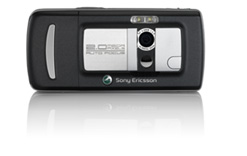All mobile phones and smartphones have cameras in them, and in some cases their quality is such that they rival that of low-end digital cameras.
But does that mean you can throw away your old camera and rely solely on your phone?
Well, no – just try taking a photo on your phone in poor light and you’ll see why! However, by making use of some of the features within a mobile phone’s camera, you can overcome these limitations, and get the most out of your phone’s camera.
This HowTo shows you how to get the best from your mobile phone’s camera, regardless of what model it is, or even how old it is.

How well a camera phone takes pictures depends as much on you as it does on the technology within the phone itself. There are three things to be aware of in order to take good photos from your camera phone:
Your phone’s specifications are clearly defined – whether it does what you want depends on what you want it to do, and whether you chose wisely when you bought it.
[pullquote_left]A resolution of 3 Megapixels or more is needed for even a reasonably decent picture[/pullquote_left]
Not all phone cameras are actually up to the job of taking a decent picture. By decent, I mean one that looks OK on a PC or on a standard 4×6″ print. How your picture looks on the display of your phone is not representative of how it will look once printed (i.e. either printed out physically, or displayed on a proper-sized display – you do actually want to see your picture, don’t you?!).
Read our guide on what to look for in a camera phone and check the specifications of your phone to ensure it’s actually capable of taking the photos you want to take.
As a rule of thumb, a resolution of 3 Megapixels and above is required for a reasonably decent picture. If your resolution is any less then I’d stick to viewing it only your phone if I were you (or maybe squint when looking at your picture – that’ll help!).
But remember, resolution isn’t the only thing to be aware of: a high resolution camera phone will be sorely let down by a poor lens, lack of autofocus or weak low-light performance.
OK, this is the part you’ve been waiting for – how your camera phone can help you take good photographs. Some of these techniques apply to all digital cameras (or even all cameras), and some just apply to camera phones.
The biggest limitation with camera phones is that they demand good light. The latest digital cameras offer shutter speeds so fast they can take pictures in dark conditions without a flash. Not so camera phones. Although some offer a flash facility, it’s usually pretty useless.
As an example, look at these two pictures, taken of my cat, Bill, in low light (these photos were taken on a very old 1 megapixel Sony Ericsson S700i, but the principles apply to all camera phones and digital cameras).
The first one is without the flash, while the second one is with the flash on the same phone. Notice any difference? No, thought not!
That’s because this phone used a single LED flash, which is useless. For a reasonably good low light pic, your camera phone needs either deal LED, or better still a Xenon flash.
Still, even with a single LED flash, any light is a bonus, so always use it!

My cat Bill, with light on
Because of a camera phone’s sensitivity to poor light conditions, you have to stand extremely still. In fact, if you can graft your camera phone onto your hands, and then cast your hands in plaster, along with the rest of your body, and then weld it all to the floor, you might have a good chance of capturing a good photo without any blur.
This is an issue even in daylight, but at night, it’s essential – be extremely still. Keep your elbows firmly pressed against your sides as you take the shot.
And even be still after you think you’ve taken the picture – on some phones, you’ll hear the phoney ‘ker-click’, and then the camera take will its shot! If you move immediately after hearing the click sound, you’ll have spoiled the shot.
I don’t need to tell you this, right? You use ‘VGA’ settings and wonder why your pictures looks so poor?! You may use more memory, but you absolutely must use the highest resolution your camera will support.
If your camera has optical zoom – marvellous! Use it as much as you like.
But digital zoom? Nooo! Digital zoom will zoom in on the subject of your choice, but at the cost of resolution. It will actually lower the resolution you are effectively taking the picture at, and the poorer the resolution, the poorer your resulting image will be.
If you want to get close to a subject, move!